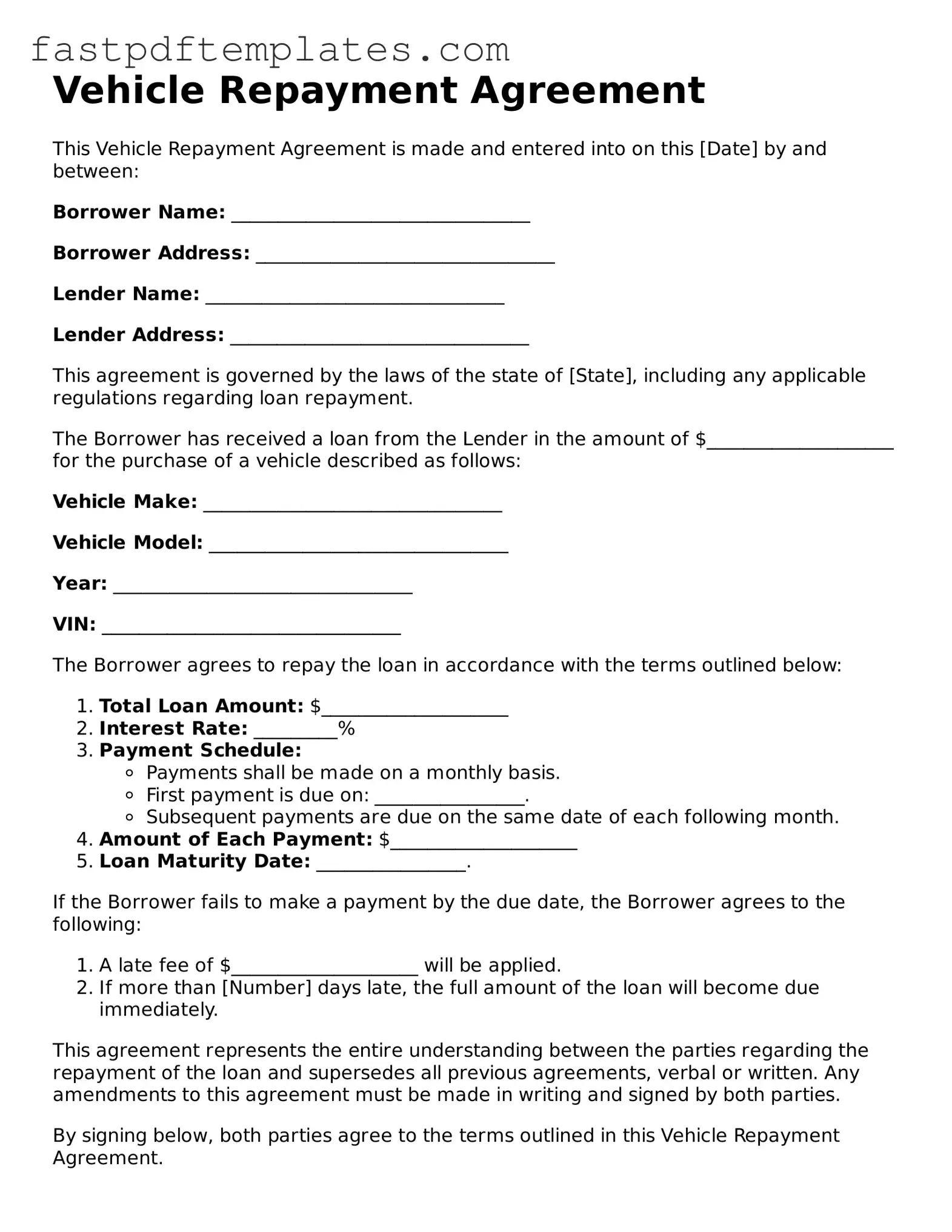Vehicle Repayment Agreement
This Vehicle Repayment Agreement is made and entered into on this [Date] by and between:
Borrower Name: ________________________________
Borrower Address: ________________________________
Lender Name: ________________________________
Lender Address: ________________________________
This agreement is governed by the laws of the state of [State], including any applicable regulations regarding loan repayment.
The Borrower has received a loan from the Lender in the amount of $____________________ for the purchase of a vehicle described as follows:
Vehicle Make: ________________________________
Vehicle Model: ________________________________
Year: ________________________________
VIN: ________________________________
The Borrower agrees to repay the loan in accordance with the terms outlined below:
- Total Loan Amount: $____________________
- Interest Rate: _________%
- Payment Schedule:
- Payments shall be made on a monthly basis.
- First payment is due on: ________________.
- Subsequent payments are due on the same date of each following month.
- Amount of Each Payment: $____________________
- Loan Maturity Date: ________________.
If the Borrower fails to make a payment by the due date, the Borrower agrees to the following:
- A late fee of $____________________ will be applied.
- If more than [Number] days late, the full amount of the loan will become due immediately.
This agreement represents the entire understanding between the parties regarding the repayment of the loan and supersedes all previous agreements, verbal or written. Any amendments to this agreement must be made in writing and signed by both parties.
By signing below, both parties agree to the terms outlined in this Vehicle Repayment Agreement.
Borrower Signature: ________________________________ Date: ________________
Lender Signature: ________________________________ Date: ________________
